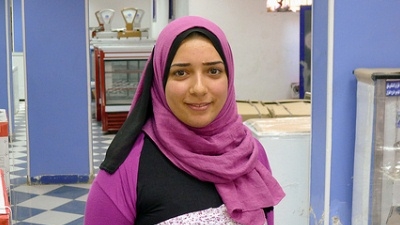Challenge
Prior to the revolution, Egypt’s economic growth was on a recovery path, growing at 5.1 percent in fiscal year FY10 and 5.6 percent in the first half of FY11, due in part to a successful financial sector reform agenda supported by the first and second DPLs. In December 2010, the Egyptian economy was still experiencing the effects of the global financial crisis, but the January 2011 revolution sent the economy into a tailspin from which it has yet to recover fully. Moreover, the revolution led to a complete halt in economic activity and the prolonged political transition, several changes of prime ministers, and Cabinets, as well as the dissolution of the Parliament, contributing to the delay and ambiguity about policies and directions. The Central Bank of Egypt (CBE) had to respond to critical matters, such as capital outflows, depiction of international reserves, pressures on the exchange rate, and rise in the inflation rate, and the overall uncertainty in the macroeconomic policies.
Solution
The World Bank support for the DPL III addressed two key strategic objectives of most recent country assistance strategy (CAS), namely to enhance the capacity of the financial system and facilitate private sector development. For the past decade, the Bank has worked closely with the government on financial sector development issues, which has been of great benefit to Egypt to develop the policy, legislative and institutional foundations for a sound and stable financial system. The Bank has been supporting the Government of Egypt in the implementation of the financial sector reform program, through an integral package of analytical work, technical assistance, advisory services, and lending.
Results
One of the key achievements of the reform program was the strengthening of the financial infrastructure, evident in: (i) operational status of real time gross settlements (RTGS) and Automatic Clearing House (ACH) with capacity to encompass low value payments, (ii) the increase of individuals receiving government worker and retiree payments through financial institutions reaching 2.9 million in 2011, compared to 0.6 million in 2008; (iii) the Central Bank of Egypt issued regulations on mobile phone payments and issued licenses to two banks and their mobile phone partners; and (iv) licensed money transfers from customer to customer and from customer to merchant.
Key profitability and efficiency indicators of the state-owned commercial banks continued to improve despite the global crisis and the immediate implications of the January revolution. This reflects the strengthening of the banks as a result of the successful financial and operational restructuring of the commercial state-owned banks since the onset of the financial sector reform program that was continued under DPL III. Some key indicators include:
- decline in non-performing loans (NPLs)-to-total loans, from 14.8 percent in 2008 to 10.9 percent in 2011;
- increase in provisions-to-NPLs from 92.1 percent in 2008 to 94.6 percent in 2011;
- decline in the state-owned enterprises (SOEs) NPLs to reach zero in 2011, as opposed to LE 10 billion in 2008.
Bank Group Contribution
This loan made by the International Bank for Reconstruction and Development (IBRD) of US$500 million represents the third tranche contributed by the Bank over the past decade to support Egypt’s financial sector reform program. These DPLs have been done in partnership with the International Finance Corporation (IFC), which has contributed to building the capacity of commercial banks, especially in the development of their small- and medium-sized enterprise (SME) and retail operations and in the area of risk management. In addition, the IFC provided advisory services to financial intermediaries—banks, and NGOs-Microfinance Institutions (MFI), as well as micro and small enterprises (MSMEs). The IFC has also supported the drafting of the non-bank financial institutions (NBFI) Law and its Executive Regulations—key triggers in this DPL.
Partners
The African Development Bank (AfDB) provided parallel financing to the Financial Sector Reform Program, of an equivalent amount of US$ 500 million in the first phase of the program.
Moving Forward
The Bank, along with other donors and development partners that are actively involved in the financial sector work (U.S. Agency for International Development, the International Monetary Fund, the European Union, and AfDB), continue to work closely with the government on financial sector development issues and monitoring the progress of the government’s Financial Sector Reform Program. The Bank continues to serve as chair of the Financial Sector Donors Subgroup, ensuring effective coordination and allowing all donors to leverage resources better for both lending and technical assistance.
Beneficiaries
Bank lending and analytical support for the government’s Financial Sector Reform Program has enhanced the capacity of the CBE, enabling them to develop the policy, legislative and institutional foundations to support a sound and stable financial system which, in turn helps in facilitating private sector development.

